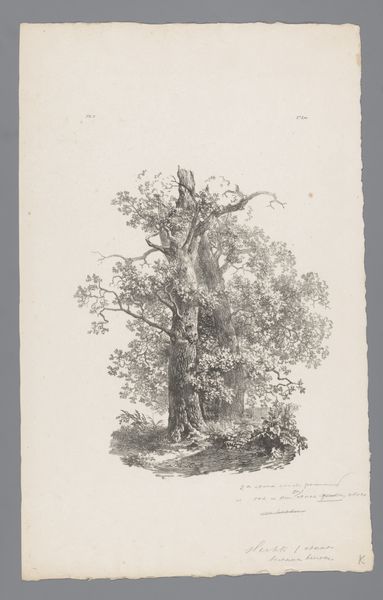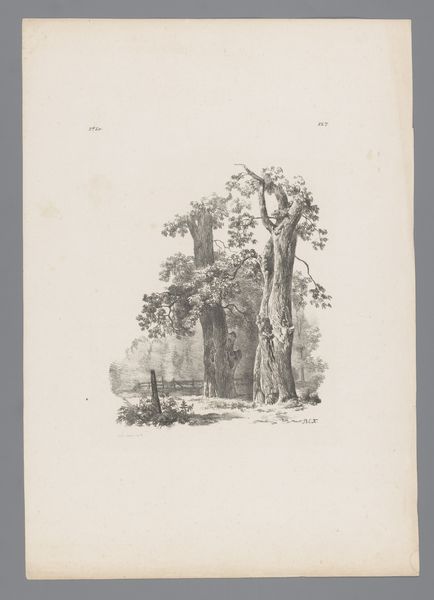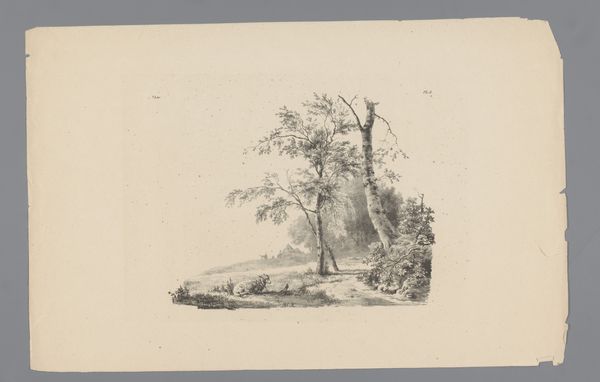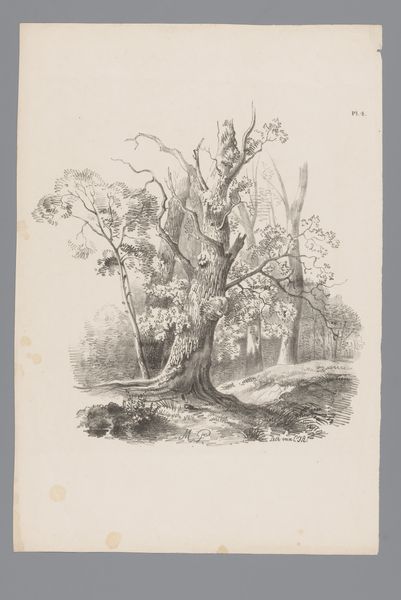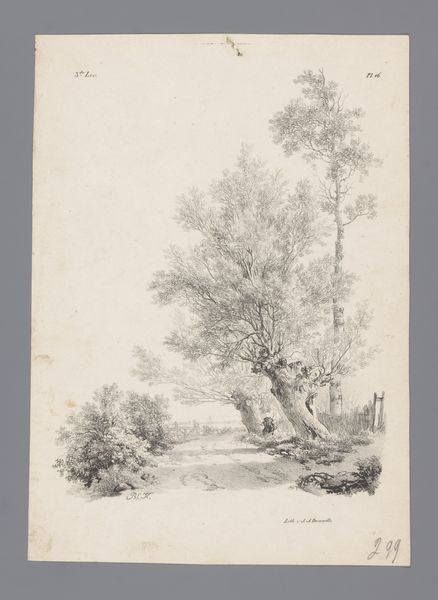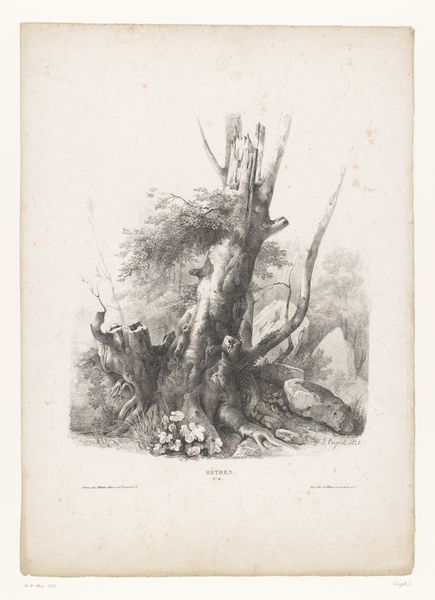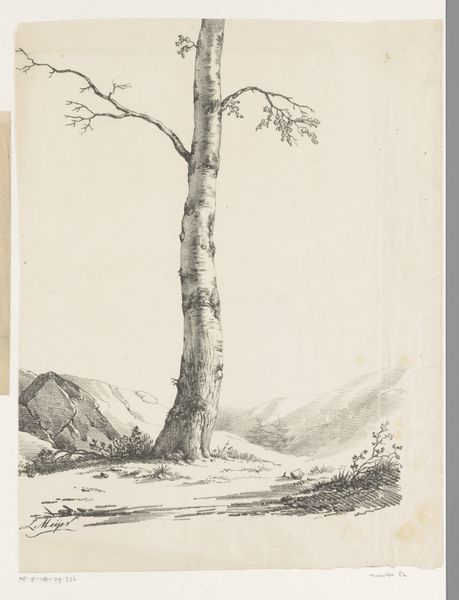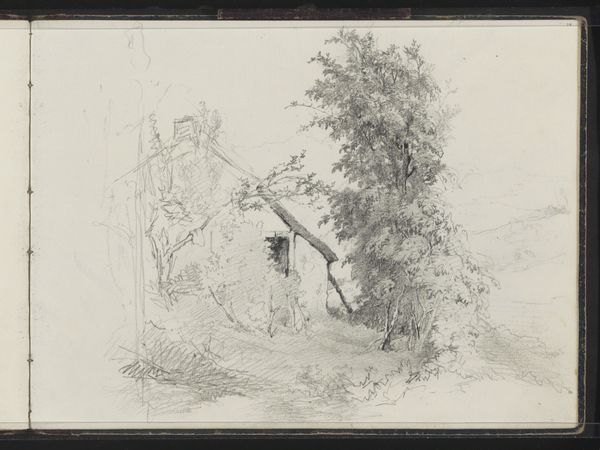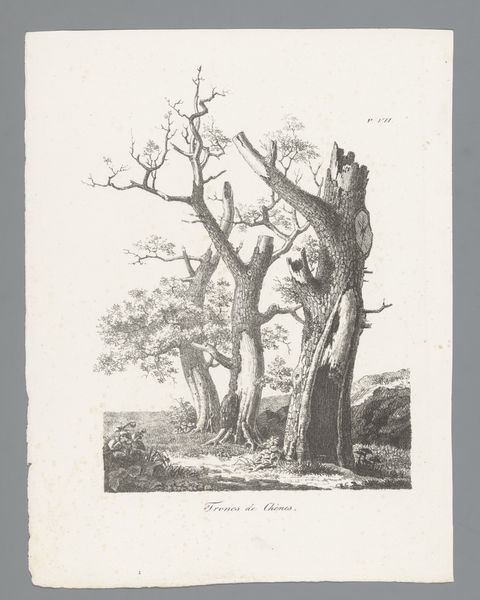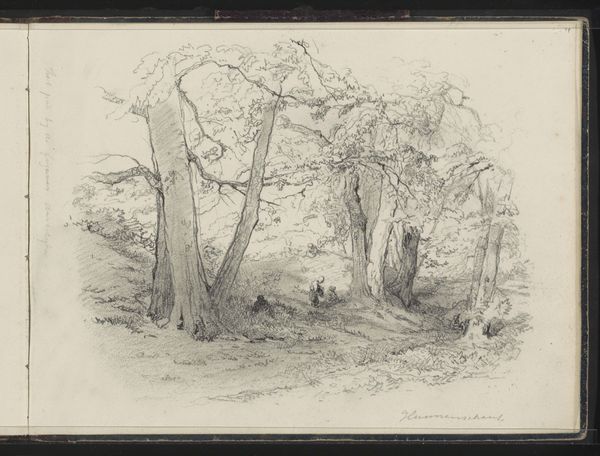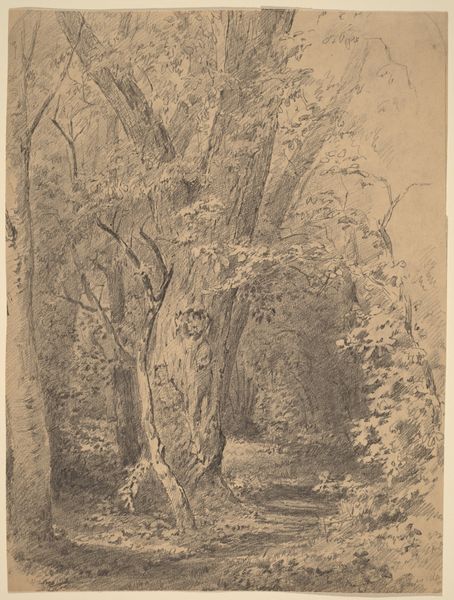
drawing, graphite, pen
#
drawing
#
landscape
#
graphite
#
pen
#
genre-painting
#
realism
Dimensions: height 304 mm, width 219 mm
Copyright: Rijks Museum: Open Domain
Curator: So peaceful! Like stepping into a hazy memory, a warm, ordinary moment frozen in time. Editor: Indeed. This is "Landschap met vrouw die de was op hangt," or "Landscape with Woman Hanging Laundry," a drawing made around 1840 by Paulus Lauters. It combines pen, graphite, and drawing techniques to create a realistic depiction of daily life. Notice how much texture he builds using simple marks. Curator: I see more than realism. The almost bare tree looms over the woman, and she seems so small against the weight of her task. Laundry – it's repetitive, mundane, almost timeless. Yet there is a subtle beauty that's so present in all this! Editor: The materiality contributes, doesn’t it? Laundry signifies cloth, labor, consumption – it is intrinsically intertwined with the very tangible, felt processes of living and sustenance. And what a brilliant choice by Lauters to picture an activity often considered 'women's work', pushing against the traditional boundaries of artistic subject matter. Curator: The social context interests me: that quiet intimacy, almost private, framed within nature's gentle embrace! Was it perceived radical at that time to depict such domestic work so plainly, I wonder? What did viewers really take away from images such as this? Editor: Given its presence here in the Rijksmuseum, one could consider that in choosing a scene rooted in everyday existence, Lauters elevated domestic labor – granted value beyond simple function to the sphere of art. And then, the simplicity in means of production mirrors, in some ways, the modesty of the subject matter itself. Curator: That feels quite true. I'll never look at doing laundry quite the same again. A mundane act now imbued with profound contemplation and recognition of life! Editor: Yes, an insightful look at the beautiful textures and often unseen labors embedded into everyday moments.
Comments
No comments
Be the first to comment and join the conversation on the ultimate creative platform.
